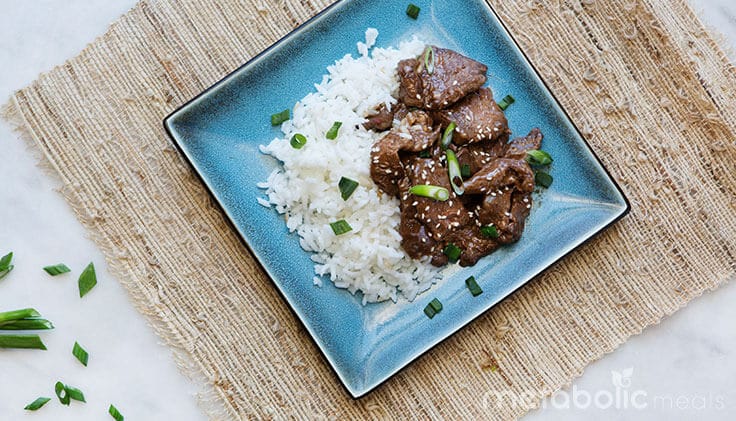ARTICLE AT A GLANCE
Regardless of your ultimate health and fitness goals, your diet will help determine your success or failure. But a healthy diet isn’t just about restricting certain things. That’s why most fad diets cause more harm than good — they deprive your body of what it needs as much as what it doesn’t need.
Fortunately, more people are realizing this and turning to more comprehensive, nutritious, and strategically targeted meal plans instead of fashionable dieting trends. There’s an increasingly wide variety of such meal plans, each backed up by science and real-world results, and each optimized to help you reach specific goals.
Let’s dive into four of the most frequently searched meal plans of 2018 so far and why they have more staying power than the average fad diet.
1. Carb Cycling Diet

A carb cycling meal plan manipulates your caloric intake by restricting your carbs on some days and reintroducing them on others. The most popular cycle is one or two days on a carbohydrate restriction and one day off of the restriction. Its popularity rose this year when fitness gurus and professional athletes started heavily promoting their use of the meal plan on social media.
Because of its heavy promotion, everyday athletes quickly saw it as a less intense form of caloric restriction than other options such as the paleo or keto diets. This method is easier in the long run because there’s always a light at the end of the tunnel — your carb cheat day. In fact, that’s why carb cycling is one of my favorite meal plans. The most important aspect of any diet is adherence, and carb cycling is an easy option to stick to.
While I’ve seen tremendous body composition changes in both athletes and the general population thanks to carb cycling, I wouldn’t recommend it for athletes who are trying to bulk up. Football players, offseason bodybuilders, athletes in extreme training, or Olympic weightlifters during an accumulation block need a higher carb intake, so restricting that intake multiple times a week could hinder recovery.
2. Paleo Diet

The paleo diet consists only of foods that our Paleolithic, or caveman, ancestors ate. That includes fruits, vegetables, and animal-based proteins and excludes grains, dairy, and any processed foods. It became popular because it provides only the nutrients that evolution has taught our bodies to use most efficiently. Unfortunately, its popularity has grown thinner, possibly due to high-carb novelty foods that adopted the term.
Things like paleo ice cream can seem jarring to the minimalist mentality that draws most people to the diet in the first place. Nevertheless, the spirit of the meal plan lives up to the hype because the premise is excellent. Fruits and vegetables paired with animal sources of protein should be the foundation of most people’s eating habits.
If you choose to embark on a paleo diet, though, beware of not getting enough healthy fats. Too many lean cuts of protein and not enough fatty fish and red meats could leave you with lower energy levels and a less-than-ideal hormonal profile. For optimal results, try implementing a paleo-style carb cycle, with your carb day including a non-paleo cheat meal.
3. Keto Diet

The point of a ketogenic, or keto, diet is to burn fat so your body creates and uses ketones as its primary source of energy instead of the glucose it gets from breaking down carbohydrates. To do this, your meals must be low in carbs, high in fats, and moderate in protein. It’s one of the more popular diets this year, and I believe that’s because many people converted to it from the paleo diet due to its simple, low-carb approach.
Because of the restriction on glucose, ketogenic meal plans have proven medically beneficial for certain populations, including those who suffer from conditions like epileptic seizures, metabolic syndrome, diabetes, and more. The research is extremely promising if you suffer from such a condition, but you should always consult with your physician first and follow the meal plan under the supervision of a healthcare professional.
However, if you’re healthy and just want to lose body fat, the keto diet is a great way to restrict your calorie intake. I find it especially promising because it emphasizes the increased consumption of dietary fats, which you need to maintain a healthy hormonal profile during weight loss. If you want to add muscle mass, I wouldn’t recommend the keto diet because it typically doesn’t allow for enough protein to optimize muscle growth.
4. Vertical Diet

Of the most-searched meal plans this year, the vertical diet is one of the more innovative. It’s a nutritional philosophy based on the consumption of highly bioavailable micronutrients that don’t distress the gastrointestinal tract. The premise is that the better your digestive health, the better your uptake of nutrients from all of your food.
Like carb cycling, the vertical diet became popular incredibly quickly because of high-profile promotion from athletes and bodybuilders such as Stan Efferding, Mark Bell, and Hafthor Bjornsson (The Mountain from the “Game of Thrones” series). However, it’s unique in that it also includes lifestyle factors such as sleep, hydration, and strength training in addition to proper fueling.
For vertical dieting, the proof is in the pudding, as many high-level athletes have seen outstanding results. Be cautious, though; there are many moving parts, such as food intolerance tests and blood work, that have to go into designing your meal plan. While it isn’t overly complicated once you get the hang of it, there is a learning curve, so I highly encourage finding professional guidance at first.
The fact that meal plans are quickly surpassing fad diets in search popularity means more people are realizing their long-term, personalized benefits. If you’re interested in trying out a meal plan yourself, start by determining your fitness goals and what your body specifically needs to achieve them. Then, find the meal plan that fits your goals best.
Alan Bishop is the Director of Sports Performance for Men’s Basketball at the University of Houston. Alan has a master’s degree in Sports Conditioning and Performance and holds certifications through the NSCA, CSCCA, and USAW.






